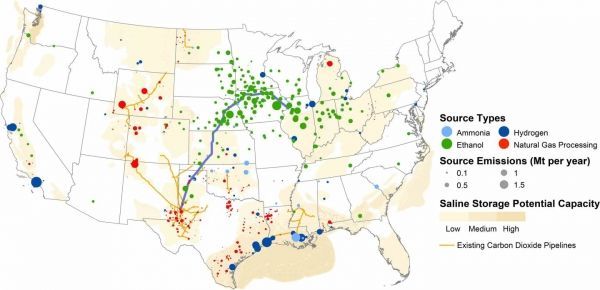The authors propose in the Proceedings of the National Academy of Sciences a pipeline network that would transfer carbon dioxide waste from ethanol refineries in the American Midwest — where grains are fermented to produce the alcohol-based fuel — to oil fields in West Texas. The captured carbon would then be pumped into near-depleted oil fields through a technique known as enhanced oil recovery, where the carbon dioxide helps recover residual oil while ultimately being trapped underground.
The researchers found that this capture-and-storage network could prevent up to 30 million metric tons of human-made carbon dioxide from entering the atmosphere each year — an amount equal to removing 6.5 million cars from the road. Currently, about 31 million metric tons of carbon dioxide annually are captured and stored worldwide.
The authors were motivated by a tax credit passed by Congress in the 2018 Bipartisan Budget Act to encourage investment in carbon capture and storage. Their analysis showed that this large-scale capture-and-storage network would only be possible — and profitable for the companies using it — if the tax credits are coupled with low-interest government loans to fund the necessary pipeline infrastructure. If governments provided low-cost loans for only half of the pipelines, the resulting smaller-scale network would still sequester 19 million metric tons of carbon dioxide per year.
Continue reading at Princeton University
Image via Ryan Edwards, Princeton University


